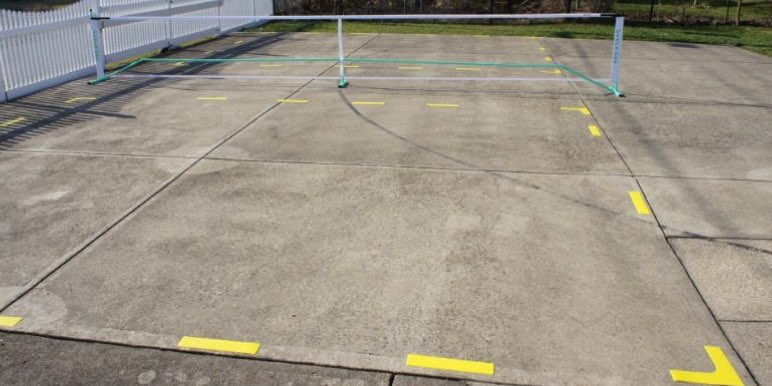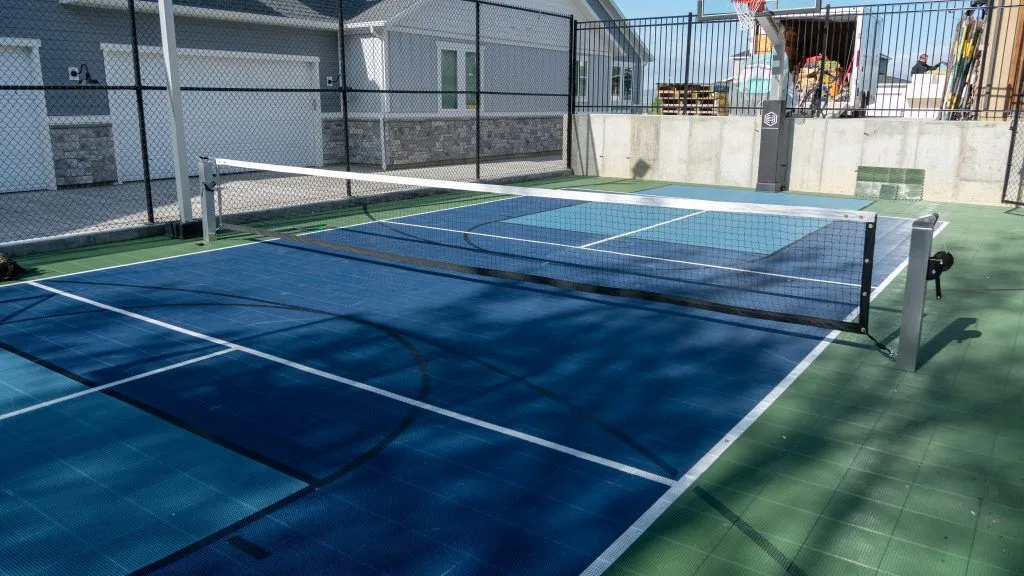Change Your Space with a Trusted Pickleball Court Construction Company
Achieve Perfect Capacities: Trick Factors To Consider for Pickleball Court Building
The building of a pickleball court requires careful attention to different critical dimensions and variables that affect both gameplay and player experience. Requirement measurements, including the vital non-volley area and total court area, should be abided by in order to make certain conformity with main laws. The choice of surface area products, efficient drain systems, and appropriate clearance around the court are similarly vital considerations that can dramatically impact long-term functionality and security. As we check out these variables, it ends up being evident that overlooking even a small detail can result in significant implications for court performance and player fulfillment.
Authorities Court Dimensions
When thinking about the building of a pickleball court, understanding the main court dimensions is vital. The common dimensions for a pickleball court are 20 feet broad by 44 feet long for both singles and doubles play. The format includes a non-volley area, typically referred to as the "kitchen area," which extends 7 feet from the web on both sides - Pickleball court construction company. This area is crucial, as it limits gamers from volleying the ball while standing within this area, advertising critical play.
The internet height is an additional essential dimension, set at 36 inches at the sidelines and 34 inches in the. Appropriate web height makes sure reasonable play and uniformity across all courts. In addition, the complete preferred location for a policy pickleball court, including buffer areas, is about 30 feet by 60 feet, enabling risk-free movement and play.

Surface Area Material Option
Choosing the appropriate surface material for a pickleball court substantially affects gamer efficiency and safety. Various materials are readily available, each with distinctive qualities that can boost gameplay. Common options include asphalt, concrete, and specialized sports surfaces such as cushioned acrylic or polyurethane.
Asphalt is a popular choice due to its price and longevity; however, it can end up being abrasive over time, possibly causing gamer injuries. Concrete offers a robust and long-lasting surface but might lack the needed hold and shock absorption during play.
Supported acrylic surfaces are significantly preferred for their capacity to provide boosted comfort and safety, as they minimize the effect on joints - Pickleball court construction company. These surface areas additionally use good traction and can be customized with different colors and appearances, permitting aesthetic allure
In addition, the selection of surface area materials ought to take into consideration environment and environmental elements, as some choices may perform better in details weather conditions. Eventually, picking the appropriate surface material is crucial for developing a safe, pleasurable playing experience that satisfies the requirements of all gamers.
Water Drainage and Water Management
Reliable water drainage and water monitoring are important components of pickleball court construction, as they directly impact the longevity and use of the having fun surface. Proper drain systems are vital to stop water build-up, which can cause surface area degeneration, mold and mildew growth, and safety and security threats for gamers.
To accomplish ideal water drainage, the court needs to be constructed with a small incline, generally around 1% to 2%, routing water far from the playing location. Furthermore, integrating drainage networks or French drains around the boundary can effectively take care of excess water overflow. These systems must be created to manage local rainfall patterns and dirt conditions to ensure efficiency.
Water management prolongs beyond drainage; it additionally entails the selection of ideal surface products that can stand up to exposure to moisture without jeopardizing performance. Routine upkeep, consisting of evaluations for blockages and sediment build-up, is essential to make sure the drain systems continue to be useful.
Lights and Visibility
Guaranteeing proper lighting and presence is vital for boosting the pickleball playing experience, specifically throughout night or low-light conditions. Sufficient illumination not only boosts presence for players yet also ensures safety read review and security by minimizing the threat of crashes. When making a pickleball court, it is necessary to analyze the design and select lights fixtures that give uniform illumination across the entire having fun surface area.
LED lights are usually recommended due to their energy efficiency and durability. The placement of these fixtures is important; they should be placed to minimize darkness and glare while making best use of protection. A common approach is to set up lights at an elevation of 20 to 30 feet and at an angle that guides light onto the court without creating distractions to gamers.
In addition, it is vital to consider the shade temperature of the lights. A cooler white light can enhance exposure and deepness perception, enabling players to track the round more successfully. Dimmable alternatives may be advantageous to change illumination degrees according to varying problems. By focusing on thoughtful lights layout, court contractors can considerably improve the overall playing experience for all participants.
Surrounding Location Considerations
Commonly forgotten, the surrounding area of a pickleball court plays a substantial duty in the total capability and enjoyment of the center. Ample space around the court is vital for player safety, allowing participants to move easily without the risk of ramming spectators, obstacles, or borders. A minimum clearance of at least 10 feet on all sides is suggested to guarantee players can react to the dynamics of the video game without obstacle.
In addition, the selection of surface products in the surrounding area can influence gamer comfort and performance. Grass, gravel, or rubberized surface areas can help mitigate injuries by supplying a softer touchdown location. Moreover, proper drainage is essential to prevent water accumulation, which can lead to dangers or damage to the court surface area.
Ease of access for all individuals, including paths leading to the court, ought to be focused on to navigate here ensure an inclusive setting for everyone wanting to appreciate the video game of pickleball. By thoughtfully planning the bordering location, center operators can boost the general experience for players and spectators alike.

Conclusion
In conclusion, attaining perfect measurements for pickleball court building and construction calls for mindful focus to main court dimensions, surface material choice, reliable drainage, and ample illumination. In addition, consideration of the surrounding location boosts gamer safety and convenience. By sticking to these key read variables, the construction of a pickleball court can offer an optimum playing atmosphere, making sure both performance and durability for several years to come. Prioritizing these components will ultimately contribute to an effective and enjoyable pickleball experience.